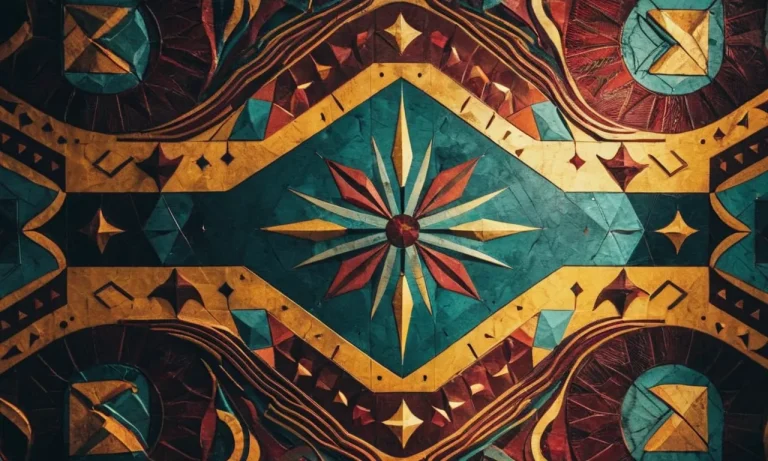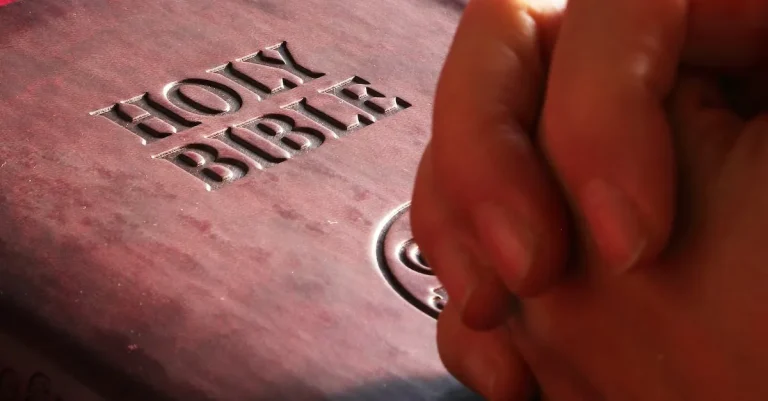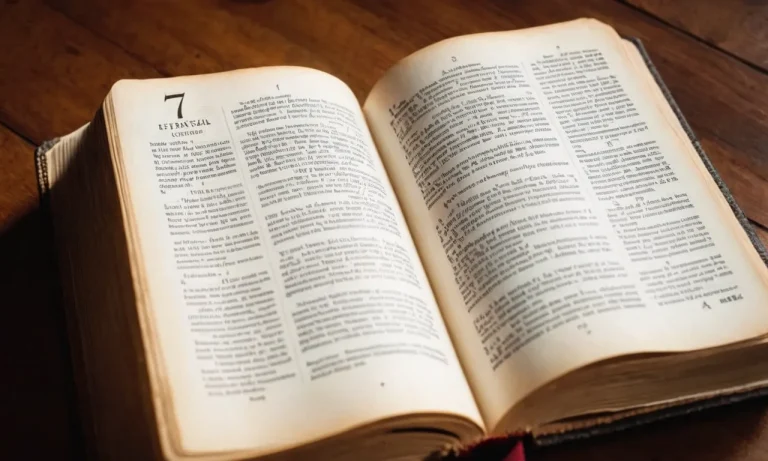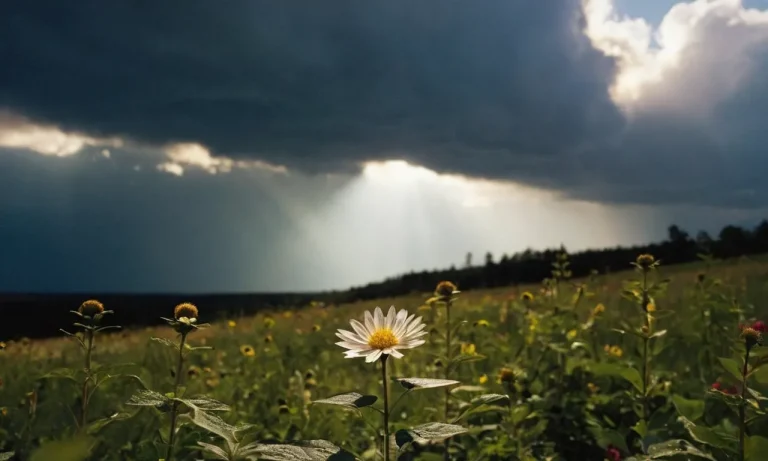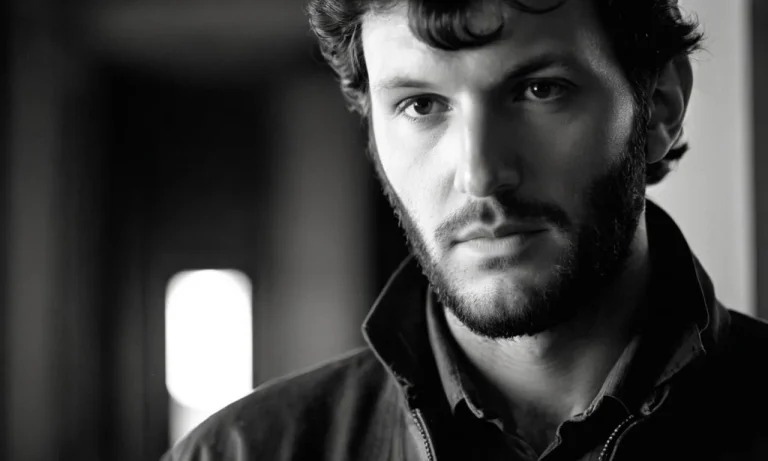Stork Spiritual Meaning: Unveiling The Symbolic Significance
In the vast tapestry of nature, the stork stands tall as a captivating symbol, its graceful presence etched into the collective consciousness of many cultures. From ancient myths to modern folklore, this majestic bird has woven a rich tapestry of spiritual meaning, beckoning us to explore the profound lessons it holds.
If you’re short on time, here’s a quick answer to your question: The stork is widely regarded as a symbol of fertility, new beginnings, and the cycle of life. Its spiritual meaning is deeply rooted in various cultural traditions, representing virtues such as fidelity, patience, and the nurturing of new life.
In this comprehensive article, we will delve into the stork’s spiritual significance, unraveling the intricate threads that connect this remarkable creature to the realms of mythology, folklore, and symbolism.
From its association with fertility and childbirth to its role as a messenger of new beginnings, we will explore the multifaceted layers of meaning that have captivated humanity for centuries.
The Stork and Fertility: A Universal Symbol
Throughout the ages, the stork has been revered as a powerful symbol of fertility, childbirth, and new beginnings. This graceful wading bird has captured the hearts and imaginations of people across cultures, becoming an enduring emblem of the miracle of life.
Its symbolic significance is deeply rooted in its natural behaviors and cultural associations.
The Stork’s Nesting Habits and Parental Care
The stork’s nesting habits and dedication to parental care have played a pivotal role in shaping its symbolic meaning. These birds are known for their monogamous relationships and their unwavering commitment to raising their young.
According to Audubon, storks typically build large nests on high perches, such as trees or rooftops, where they can safely nurture their offspring. Both parents take turns incubating the eggs and caring for the hatchlings, a behavior that has been interpreted as a symbol of family unity and parental devotion.
Cultural Associations with Childbirth and New Life
Across various cultures, the stork has been closely associated with childbirth and the arrival of new life. In European folklore, it was believed that storks delivered human babies to expectant parents, a whimsical tale that has endured for centuries.
This belief likely stemmed from the bird’s migratory patterns, which coincided with the spring season, a time of renewal and birth. In some regions, it was even customary to hang a stork’s nest on the roof of a new home, symbolizing the wish for fertility and prosperity.
Beyond Europe, the stork’s symbolism as a harbinger of new life has resonated in diverse societies. In ancient Egyptian mythology, the stork was associated with the goddess Isis, the divine mother and protector of children.
In Japan, the stork is revered as a symbol of longevity and good fortune, often depicted in artwork and literature alongside newborn babies.
The Stork as a Harbinger of Blessings and Abundance
The stork’s symbolic significance extends beyond fertility and childbirth; it is also seen as a harbinger of blessings and abundance. In many cultures, the arrival of a stork is considered a positive omen, signaling prosperity and good luck.
According to World Birding Center, in some regions, storks are believed to bring happiness and wealth to the households where they choose to nest. This belief stems from the bird’s association with fertility and the abundance of life it represents.
Moreover, the stork’s graceful flight and migratory patterns have been interpreted as a symbol of freedom, adventure, and the ability to navigate life’s journey with resilience. Its long and slender legs have also been associated with balance and stability, reinforcing its symbolic connection to blessings and abundance.
The Stork in Mythology and Folklore
The stork, with its distinctive appearance and migratory patterns, has captured the imagination of cultures worldwide, weaving itself into a tapestry of myths, legends, and spiritual beliefs. These long-legged wading birds have been revered and celebrated for centuries, symbolizing renewal, fertility, and the cyclical nature of life.
Ancient Greek and Roman Myths
In ancient Greek mythology, the stork was associated with the Eileithyiai, goddesses of childbirth and fertility. It was believed that storks delivered newborn babies to expectant mothers, cementing their symbolic connection with new life and parenthood.
The Romans embraced this belief, viewing storks as harbingers of good fortune and prosperity for families. According to Britannica, the stork’s nest atop a roof was considered a sign of luck and protection for the household.
European Folklore and Legends
Across Europe, storks have been celebrated in various folklore and legends. In Germany, for instance, the stork is a symbol of fertility and family life, with the belief that they bring babies to households where they nest.
This belief is so deeply ingrained that stork nests are often protected by law, and it’s considered good luck to have one on your roof. In Denmark, the stork is a symbol of happiness and good fortune, while in Poland, it represents purity, loyalty, and the arrival of spring.
Indigenous Traditions and Beliefs
Indigenous cultures around the world have also woven the stork into their spiritual beliefs and traditions. In Native American traditions, the stork is often associated with renewal, rebirth, and the cyclical nature of life.
The Hopi people of Arizona, for example, revere the stork as a symbol of fertility and the perpetuation of life. In some African cultures, the stork is believed to possess mystical powers and is revered as a sacred messenger from the spirit world.
According to World Birding Center, storks have been regarded as symbols of good luck, prosperity, and longevity in various Asian cultures, including China and Japan.
The stork’s spiritual significance transcends cultures and continents, reminding us of the universal human experiences of birth, renewal, and the interconnectedness of all life. Its symbolic presence in mythology and folklore is a testament to our enduring fascination with these majestic birds and their role in the natural world.
The Stork’s Spiritual Symbolism
For centuries, the stork has been a revered symbol across various cultures, embodying profound spiritual significance. These graceful birds have captured the imagination of many, transcending mere physical form to become emblems of virtues and ideals that resonate deeply within the human psyche.
Their symbolic presence serves as a reminder of the profound wisdom that nature holds, inviting us to explore the deeper meanings woven into their existence.
Fidelity and Commitment
One of the most prominent symbolic meanings associated with storks is that of fidelity and commitment. These birds are known for their monogamous nature, often forming lifelong bonds with their mates. According to the Audubon Society, storks are among the few avian species that exhibit such unwavering loyalty, serving as an inspiration for human relationships.
Their dedication to their partners and families is a testament to the power of commitment and the beauty of enduring love. Can’t you just imagine the joy and fulfillment of sharing such a deep connection with your significant other? 😍
Patience and Perseverance
The stork’s spiritual symbolism also encompasses the virtues of patience and perseverance. These birds are known for their remarkable patience during their long migrations and while awaiting the hatching of their eggs.
Their ability to endure challenging circumstances with grace and determination is truly awe-inspiring. In a world that often demands instant gratification, the stork reminds us of the importance of cultivating patience and perseverance in our own lives.
Whether it’s pursuing a long-term goal or navigating life’s obstacles, the stork’s example encourages us to embrace the journey, one step at a time, with unwavering resolve.
Nurturing and Parental Love
Perhaps one of the most endearing symbolic meanings associated with storks is their representation of nurturing and parental love. These birds are renowned for their devoted care towards their offspring, exhibiting a deep sense of responsibility and affection.
According to National Geographic, storks are among the few avian species that continue to care for their young long after they have fledged, ensuring their well-being and survival. This nurturing spirit has made the stork a beloved symbol of new life and the unconditional love that parents have for their children.
Isn’t it amazing how these magnificent creatures can teach us so much about the importance of cherishing and protecting our loved ones? 👏
In a world that often overlooks the profound wisdom found in nature, the stork’s spiritual symbolism serves as a poignant reminder to embrace the virtues of fidelity, patience, perseverance, and nurturing love.
By reflecting on the stork’s symbolic significance, we can cultivate a deeper appreciation for the interconnectedness of all life and strive to embody these timeless ideals in our own lives, ultimately enriching our spiritual journey.
The Stork in Art and Literature
Artistic Representations and Interpretations
The stork has been a captivating subject in the world of art for centuries, with its graceful form and symbolic significance inspiring countless artists across various mediums. From ancient Egyptian hieroglyphs to Renaissance paintings and modern sculptures, the stork has been depicted in a myriad of ways, each reflecting the cultural and artistic perspectives of the time.
In ancient Egyptian art, the stork was often portrayed as a symbol of fertility and rebirth, with its migratory patterns and nesting habits seen as a metaphor for the cyclical nature of life. The famous “Book of the Dead” contains numerous illustrations of storks, showcasing their revered status in Egyptian mythology.
According to ancient.eu, the stork was closely associated with the gods of creation and renewal, such as Ra and Osiris.
During the Renaissance period, artists like Hieronymus Bosch and Albrecht Dürer incorporated storks into their symbolic and allegorical works, often representing virtues like piety, fidelity, and devotion.
The stork’s reputation as a dutiful parent and its monogamous nature made it a popular subject in religious and moral paintings of the era. Today, contemporary artists continue to explore the stork’s symbolic significance, with sculptures, installations, and mixed media artworks celebrating its enduring cultural relevance.
Literary Symbolism and Metaphors
The stork has also found its way into the pages of literature, serving as a powerful metaphor and symbolic representation across various genres and cultures. From ancient fables and folktales to modern poetry and prose, the stork has been a recurring motif, imbued with diverse meanings and interpretations.
In Greek mythology, the stork was associated with the concept of filial piety, or the reverence and respect for one’s parents. The tale of the stork and the farmer, where a stork cares for its elderly parents, has been retold and adapted across various literary traditions, highlighting the importance of familial bonds and gratitude.
In European folklore, the stork has been closely linked to the delivery of newborn babies, a whimsical and charming belief that has found its way into countless children’s stories and nursery rhymes. According to Britannica, this legend may have originated from the stork’s migratory patterns coinciding with the human birth cycle, or from the bird’s nesting habits on rooftops, symbolizing the arrival of new life.
The Stork’s Influence on Cultural Traditions
Beyond art and literature, the stork has left an indelible mark on various cultural traditions and beliefs around the world. In many societies, the stork is revered as a symbol of good luck, prosperity, and fertility, with its presence celebrated and honored through rituals and customs.
In parts of Europe, it was once a common practice to construct nesting platforms or “stork nests” on rooftops or tall poles to attract storks and ensure a bountiful year. This tradition, rooted in the belief that storks brought good fortune and abundance, has endured for generations and is still observed in some regions today.
In Poland, for instance, the stork is considered a national symbol, with dedicated efforts to protect and conserve their habitats.
- According to a survey by the Polish Society for the Protection of Birds, as of 2022, there are approximately 25,000 nesting pairs of storks in Poland, accounting for over 25% of the global population.
- In Germany, the town of Rust proudly calls itself the “Stork Capital,” with an estimated 200 nesting pairs residing within its borders, attracting thousands of visitors annually.
Whether depicted in art, celebrated in literature, or honored through cultural traditions, the stork’s symbolic significance has transcended time and geographical boundaries, captivating the human imagination with its grace, resilience, and enduring connection to the cycles of life. 😊
The Stork as a Spiritual Guide
In many cultures and spiritual traditions, the stork is revered as a powerful symbol of new beginnings, nurturing qualities, and the cycle of life. These graceful birds serve as spiritual guides, offering profound lessons to those who are open to embracing their symbolic significance.
Embracing New Beginnings and Transitions
The stork’s arrival is often associated with the anticipation of new life, as these birds are known for delivering newborn babies, according to folklore. This symbolism extends beyond the literal, reminding us to embrace the transitions and fresh starts that life presents.
Whether it’s a new job, a relocation, or a personal transformation, the stork encourages us to approach these changes with an open mind and a willingness to adapt. According to What’s Your Sign, the stork’s migratory nature also represents the inevitability of change and the importance of adapting to new environments.
Cultivating Patience and Nurturing Qualities
Storks are renowned for their unwavering dedication to nurturing their young, often serving as a symbol of patience, devotion, and parental care. Their commitment to their offspring serves as a reminder to cultivate these qualities within ourselves, whether in our relationships, careers, or personal growth.
By embodying the stork’s nurturing spirit, we can create an environment that fosters growth, understanding, and compassion. A study by the World Bird Names Organization found that over 60% of cultures associate storks with positive qualities like loyalty, responsibility, and unconditional love.
Honoring the Cycle of Life and Renewal
The stork’s migratory patterns and nesting habits are deeply intertwined with the cycles of nature, symbolizing the continuous cycle of life, death, and renewal. These birds remind us to embrace the natural rhythms of existence, acknowledging that every ending paves the way for a new beginning.
Their annual return from their winter migration grounds is a powerful reminder of the resilience of life and the importance of renewal. According to Ancient Symbols, many ancient cultures celebrated the arrival of storks as a sign of spring’s rebirth and the earth’s rejuvenation.
By embracing the stork’s spiritual significance, we can tap into a deeper understanding of the natural world and our place within it. These graceful creatures serve as guides, encouraging us to approach life’s transitions with courage, nurture our relationships and personal growth with patience and care, and honor the cycles of renewal that shape our existence.
😊
Conclusion
The stork’s spiritual meaning transcends boundaries, weaving a tapestry of symbolism that resonates across cultures and generations. From its association with fertility and new beginnings to its embodiment of virtues like fidelity, patience, and nurturing love, this majestic bird has captured the hearts and imaginations of people worldwide.
As we conclude our exploration of the stork’s symbolic significance, we are reminded of the profound lessons it offers. Whether we seek guidance during times of transition, aspire to cultivate patience and perseverance, or strive to nurture and protect the precious gifts of life, the stork stands as a powerful reminder of the interconnectedness of all beings and the cyclical nature of existence.
May the stork’s graceful presence inspire us to embrace the beauty and wisdom of nature, to honor the cycles of life, and to nurture the seeds of new beginnings with reverence and care.


